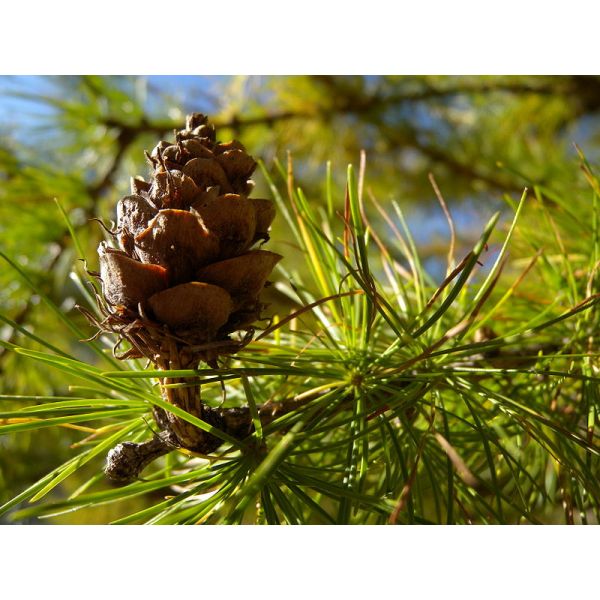Graines Larix Decidua (Graines Mélèze d'Europe, Mélèze Commun)
Graines Larix Decidua (Graines Mélèze d'Europe, Mélèze Commun)
Popular Bonsai species and ornamental tree native to the mountains of central Europe...

Delivery
All orders shipped with UPS Express.
Always free shipping for orders over US $250.
All orders are shipped with a UPS tracking number.
Returns
Items returned within 14 days of their original shipment date in same as new condition will be eligible for a full refund or store credit.
Refunds will be charged back to the original form of payment used for purchase.
Customer is responsible for shipping charges when making returns and shipping/handling fees of original purchase is non-refundable.
All sale items are final purchases.
Help
Give us a shout if you have any other questions and/or concerns.
Email: [email protected]
Phone: +1 (23) 456 789
Availability: En stock
SKU
Larix decidua
Larix decidua, communément appelé mélèze d'Europe, est connu pour être une espèce de Bonsai populaire et ses vertus ornementales. Cet arbre est originaire des montagnes d'Europe centrale. Il est un de taille moyenne à feuilles caduques et peut atteindre jusqu'à 45 m de hauteur.
Larix decidua fleurit d'Avril à Mai. Ses feuilles vertes claires mesurent 2-4 cm de long et émergent au printemps. Une manne au goût sucré est obtenue à partir du tronc, elle peut être mangée crue, mais est principalement utilisée en médecine.
Larix decidua tolère le froid. L’arbre est capable de survivre à des températures d'hiver qui peuvent atteindre moins de -50 ° C. Cependant, il ne peut pas grandir à l'ombre ou dans les villes en raison de la pollution atmosphérique. L'arbre préfère les sols humides.
| label | Larix Decidua |
|---|---|
| Nom commun | European larch |
| Famille | Pinaceae |
| Genre | Larix |
| Espèce | Larix decidua |
| Usage thérapeutique | The bark, stripped of its outer layer, is astringent, balsamic, diuretic, expectorant, stimulant and vulnerary. Its main application is as an expectorant in chronic bronchitis and has also been given internally in the treatment of haemorrhage and cystitis. A cold extract of the bark is used as a laxative. As an external application, it is useful in the treatment of chronic eczema and psoriasis. The powdered bark can be used on purulent and difficult wounds to promote their healing. |
| Germination | For germination the seeds require a period of cold stratification. In general, the seeds will fail to germinate unless treated in this way, simply sowing untreated seeds in compost at room temperature will not break down the dormancy and germination will be disappointing. Depending on different seedlots it is possible that germination may begin before the end of pretreatment, if this happens sow all of the seeds asap! Fill your chosen container with a good quality general potting compost. Suitable containers could be plant pots, seed trays or plug trays or even improvised containers with drainage holes. Firm the compost gently and sow the seeds on the surface. If you are sowing in plug trays, sow 2 or 3 seeds per cell. Cover the seeds with a couple of millimeters of vermiculite or failing that a fine layer of sieved compost. Follow with a gentle watering and keep them at room temperature. Germination will begin a few weeks from sowing. The seedlings are reasonably robust and trouble free and usually grow to a height of between 10 and 20 cm in the first growing season depending on the sowing date and cultural techniques. Densely sown seedlings are at risk from fungal diseases such as ?damping off? which can cause rapid loss of many seedlings. Developing seedlings should be fine in full sun, keep them well watered and free of competing weeds. Growth will accelerate in the second and subsequent years and the developing young trees should be re-potted as necessary preferably during the dormant season. After perhaps 2 years they are ready to be planted in their permanent position. |
| Scarification / Stratification | First soak the seeds in water for 24 hours, then fully drain away all of the water and place the seeds in a zip-lock freezer bag. Place the seeds in the fridge at around 4 degree Celsius, it is important that during this period that the seeds do not dry out or are waterlogged otherwise the pre-treatment will be ineffective. After 6 weeks under these conditions the seeds are ready to be sown. |
| Price View | Tranche de prix |

